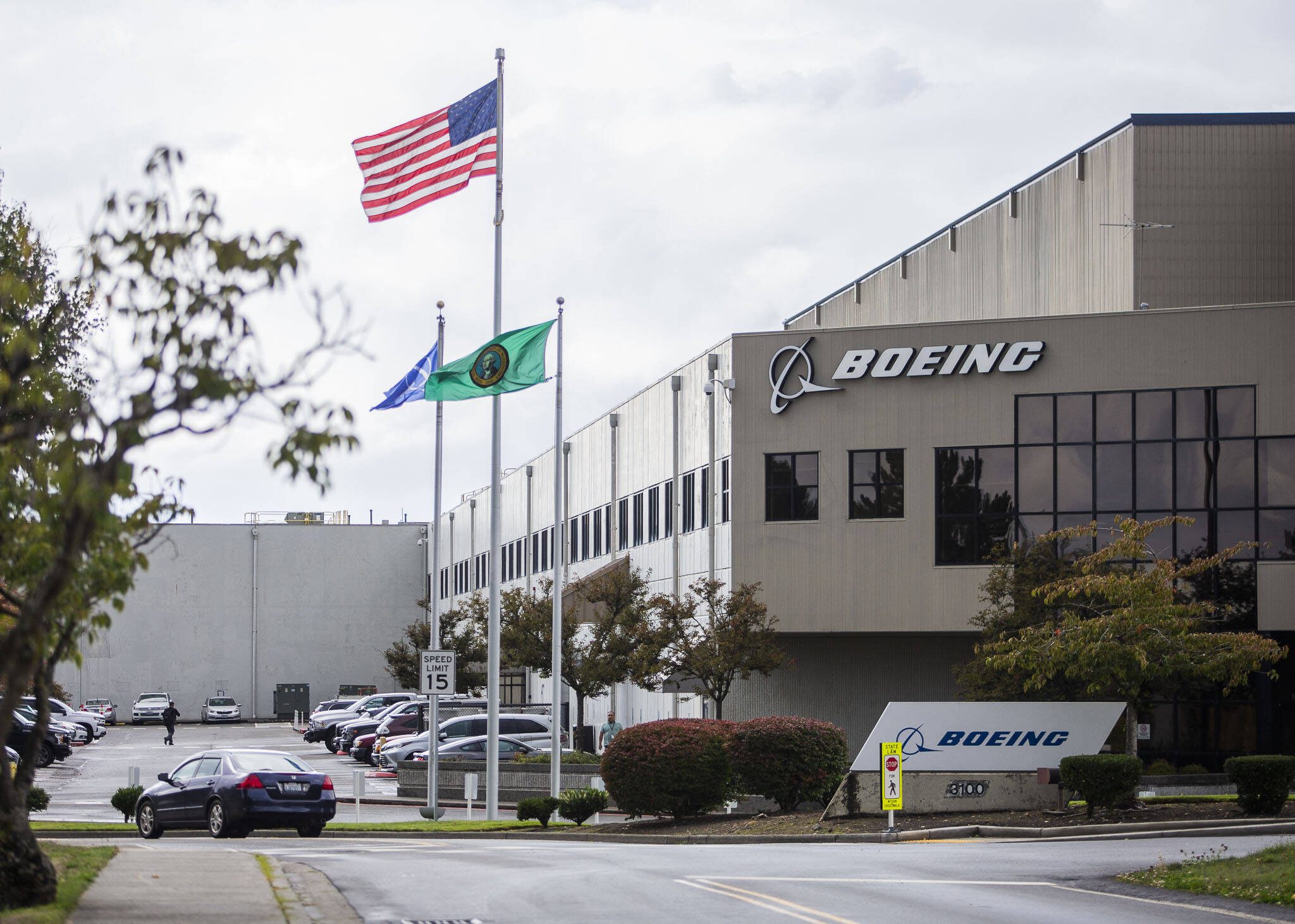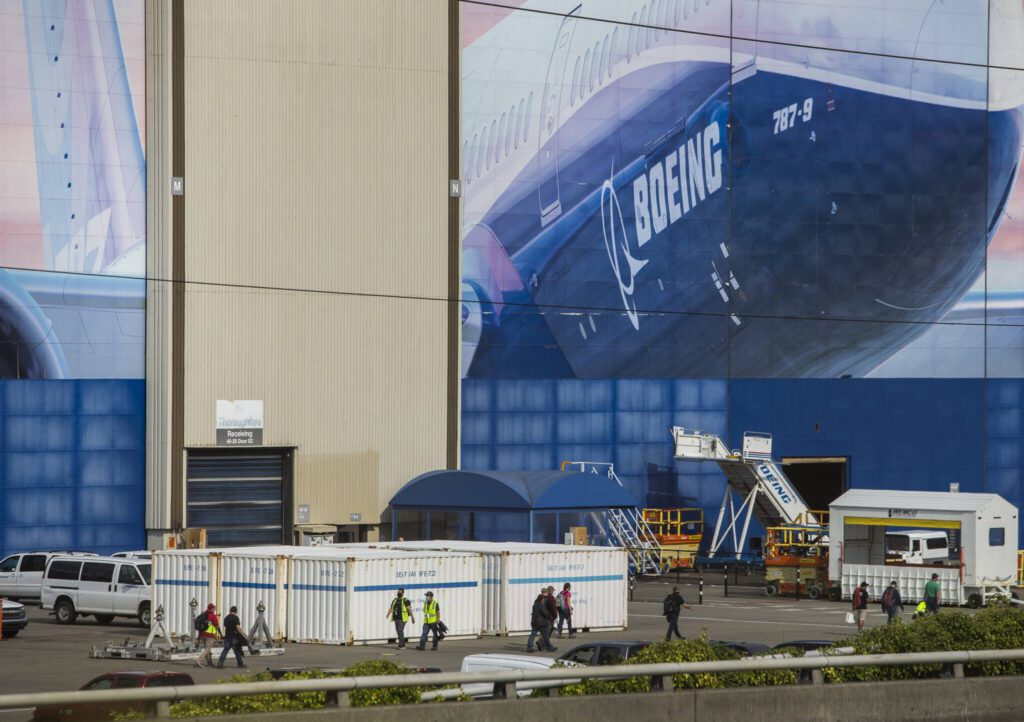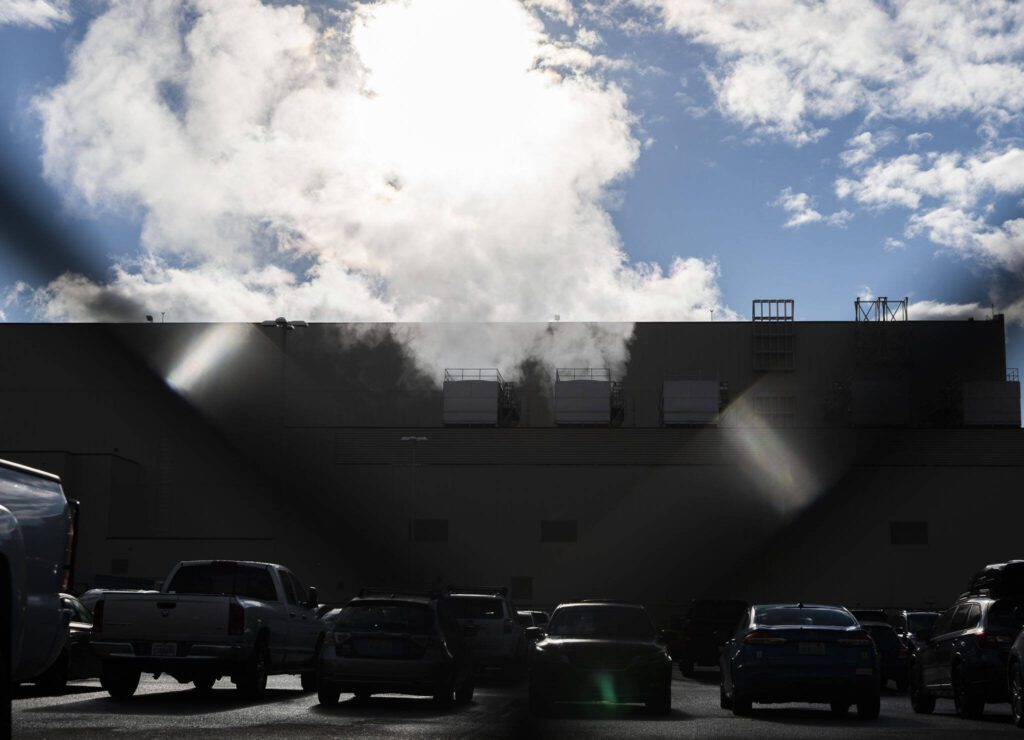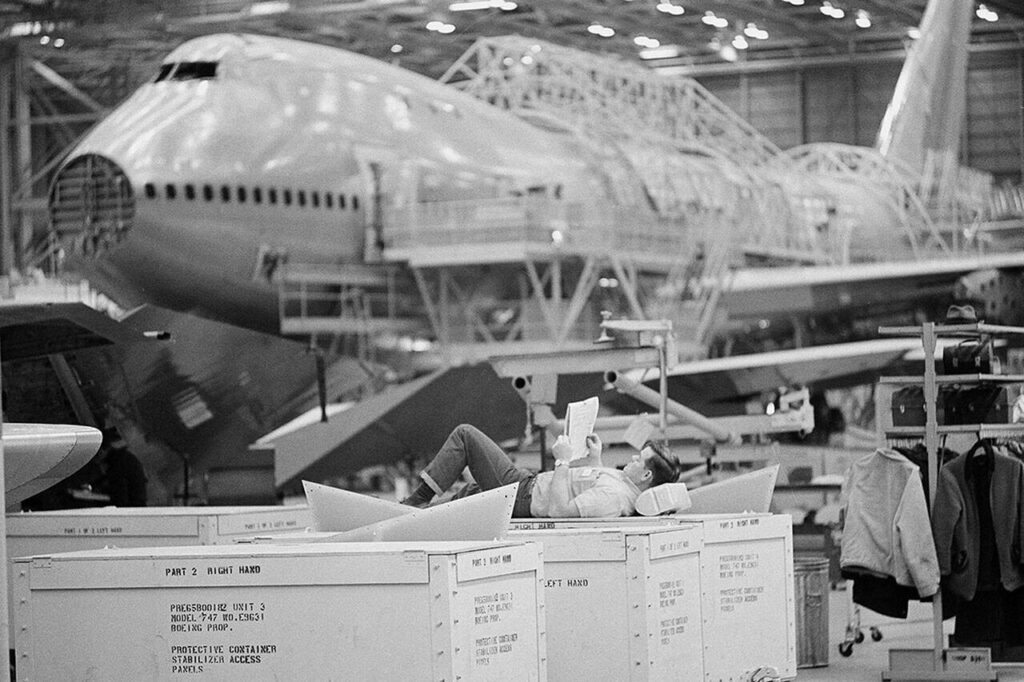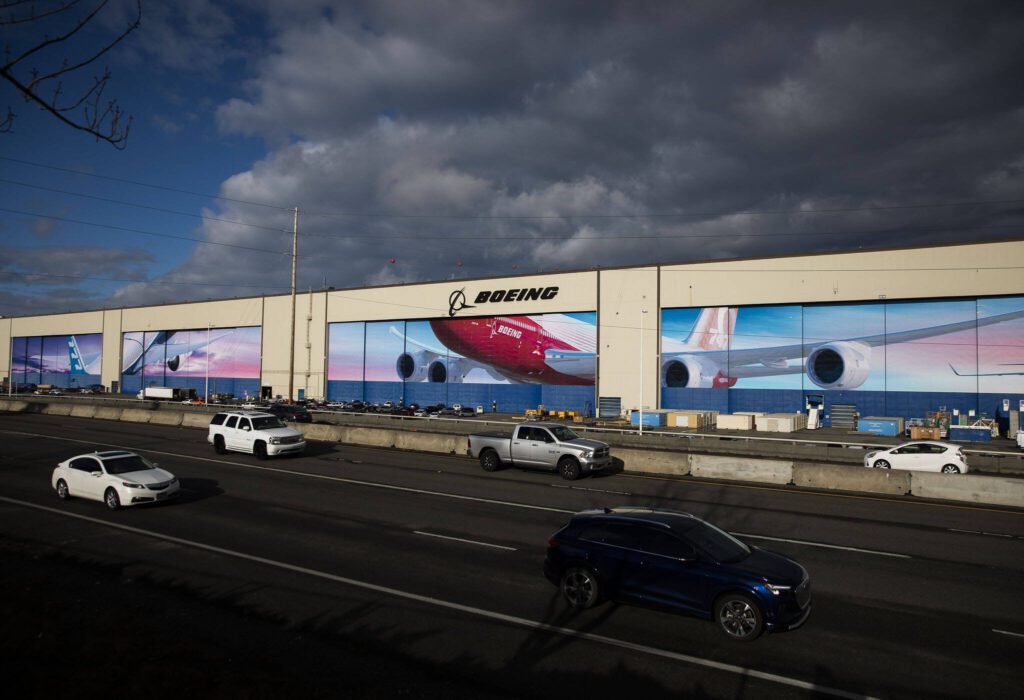EVERETT — Two new lawsuits filed this month allege more workers at Boeing’s plants in Everett were exposed to toxic chemicals that led to birth defects in their children.
The latest lawsuits follow three others filed in recent years that revealed, as reported by The Daily Herald, that the aerospace giant’s top leaders knew of the dangers inherent in the chemicals, but did little to protect its workers as some of their kids faced birth defects.
In 1980, one of the company’s top doctors, Barry Dunphy, alerted company leadership that tens of thousands of Boeing workers in the Puget Sound region were being exposed to “probably hazardous” and “certainly uncontrolled” amounts of toxic chemical mixtures. Those chemicals could lead to reproductive issues, Dunphy warned.
But company leadership batted down Dunphy’s pitch over four decades ago for increased worker protections, according to internal company documents revealed through depositions in recent lawsuits.
All five lawsuits involve births that occurred in the decades since.
Marie Riley, 43, has a lifelong heart condition.
Tianna Hatleberg, 29, has a neurological disorder resulting from a missing part of her brain.
And Natalie Ford, 9, has a debilitating genetic disorder.
All had parents who worked at Boeing’s plants in Everett or Seattle. In the past year, the trio each settled their cases for undisclosed amounts of money.
The two newest lawsuits allege similar health issues in children of parents who also worked in local plants.
Christian Kemmling, now 17, was born with several disorders making him non-verbal.
Logan Evans, now 6, was born with spinal defects that will leave him disabled for life.
“I think there is a growing appreciation for the fact that for many years, Boeing has been using chemicals in the workplace that are known to affect the offspring,” said Michael Connett, the lead attorney for all of the plaintiffs.
And in what Connett calls “systemic oversight by many companies, like Boeing,” he has been surprised by how little information was shared with workers about the potential impacts the chemicals they use every day could have on their future children.
So while Boeing’s Environmental Health and Safety Division has implemented policies to reduce worker exposure to these toxic chemicals, they’ve often lacked enforcement from company supervisors, the lawsuits allege.
Connett expects more cases against Boeing.
Boeing declined to comment on the two most recent lawsuits.
The company previously denied chemical exposure led to birth defects in the children of employees. The company also argued it took adequate steps to protect workers.
‘Literally hundreds’
As early as 1986, a Boeing epidemiologist compiled a list of chemicals potentially associated with reproductive impacts.
That first list included cadmium, toluene, xylene and other solvents. While working for the local airplane titan, John Kemmling, Mike Evans and Kelly Brigance all worked with or near those chemicals, according to the two new lawsuits filed this month in King County Superior Court.
“Boeing has been using reproductively toxic chemicals in its workplace for years,” said Connett, who is representing the plaintiffs alongside lawyers from the Seattle firm Weinstein Caggiano.
Meanwhile, company documents reportedly show 3,600 workers from 1992 to 2004 were diagnosed with chemical-induced dermatitis.
Since 2008, Brigance has worked at Boeing’s giant facilities in south Everett, according to her Sept. 8 lawsuit. While working in ergonomics at the aerospace company, she was stationed close to where planes were worked on — and where the toxic chemicals and heavy metals were used.
While she was pregnant with her son Logan, who was born in July 2017, she worked light duty at the Everett Modification Center next to Paine Field. The smell of chemicals was pervasive there, she reported.
At the same time, her husband Mike Evans worked as a structure mechanic on the 777 airplane line at the company’s manufacturing plant in Everett. Through this work, he used the troubling chemicals every day, the lawsuit alleges. For Evans, those chemicals included solvents like toluene, xylene and heavy metals, like hexavalent chromium and cadmium.
The company long has known of the risks associated with hexavalent chromium, a carcinogen used to prevent corrosion.
In the mid-1990s, the company contracted with the University of Washington to study the incidence of lung cancer among Boeing workers who used chromium. The study cohort looked at 2,500 workers who spent at least six months in jobs involving hexavalent chromium exposure from 1974 to 1994. Among them, researchers counted 15 cases of lung cancer and four other cases of respiratory cancer.
The study specifically concluded there was an elevated risk for people who worked directly with the product for more than five years.
Just a few years later, in 2000, however, Boeing lobbied to keep the regulatory limit for hexavalent chromium “AS HIGH AS POSSIBLE” when the feds were updating the “permissible exposure limit,” according to corporate records revealed through depositions.
In 2009, years before Evans started work there, Boeing added hexavalent chromium to its internal list of chemicals that could have adverse reproductive impacts, according to the complaint. Toluene, xylene and cadmium were featured on the first version of that list back in 1986.
But in 2020, Jennifer Allen, an industrial hygienist at the Boeing Everett plant, warned “literally hundreds of Boeing employees are at risk” of developing lung cancer or other forms of cancer from the heavy metal, emails revealed. Allen told colleagues airborne levels of hexavalent chromium still “greatly exceed the legal permissible exposure limit” in the factory’s paint operations.
Allen also noted “there is no chemical exposure more severe or of greater concern than chromate primer application in Boeing facilities.”
Meanwhile, company health and safety professionals have testified Boeing has taken adequate steps to protect its employees — especially those who handle hexavalent chromium — with respirators, ventilation and health monitoring.
“Boeing’s philosophy was always not to do the bare minimum,” Boeing’s Environment, Health and Safety Director Ken Drew said in a deposition early last year, “but to — to reduce levels as low as possible through the right controls and respiratory protection for inhaled components and contact with chemicals.”
Before moving to Boeing’s Renton plant, John Kemmling worked from 1996 to 2002 as a fuel tank sealer on 777 jets in Everett. And like Mike Evans, he was consistently exposed to toluene, xylene, hexavalent chromium and cadmium, another complaint alleges.
While working in Renton in the summer of 2006, his son Christian was born with numerous defects that will leave him unable to live independently, according to the lawsuit.
Another solvent both John Kemmling and Mike Evans worked with is known as methyl propyl ketone, or MPK. In 2015, that product was the subject of a worrisome email from a Boeing assembly manager.
“When it vaporizes, MPK creates an oppressive work environment in which our mechanics report headaches, nose bleeds, etc.,” the manager wrote in an email to company health and safety experts.
Boeing employees are used to taking some risks in the workplace, Connett said. But in his conversations with them, they’re consistently not prepared to also risk their children.
To Connett, this litigation isn’t about attacking Boeing, one of the biggest employers in the region, just pushing the company to better protect and inform its workers about these myriad dangers.
Jake Goldstein-Street: 425-339-3439; jake.goldstein-street@heraldnet.com; Twitter: @GoldsteinStreet.
Talk to us
> Give us your news tips.
> Send us a letter to the editor.
> More Herald contact information.
